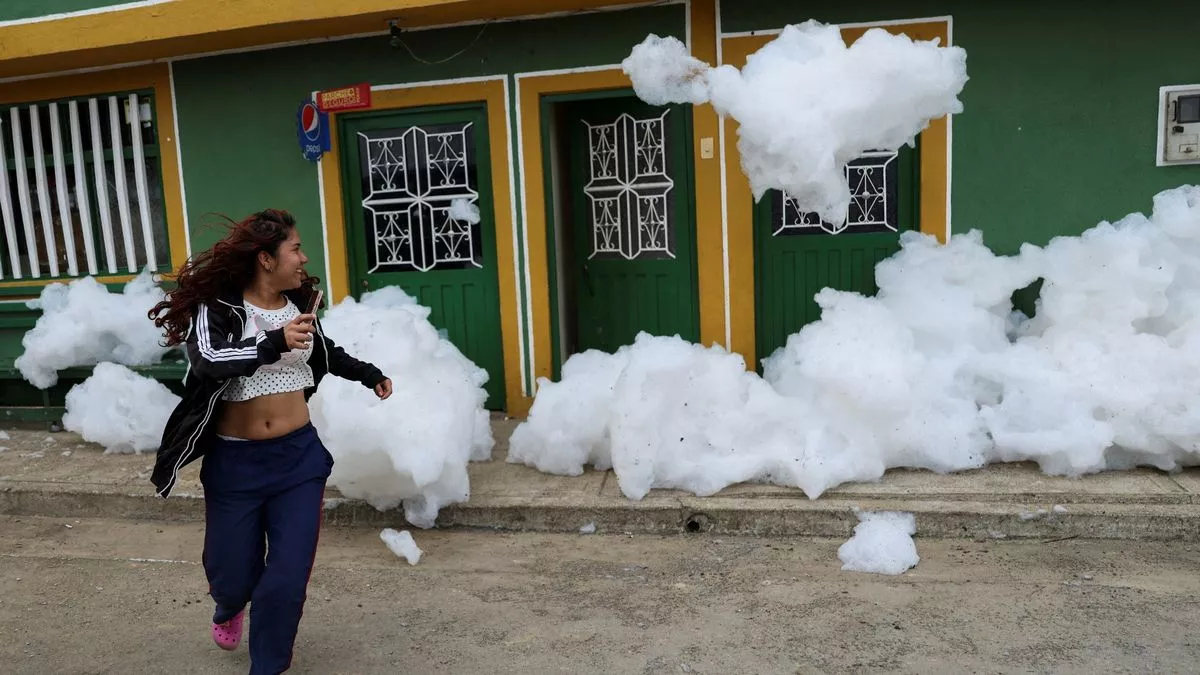Toxic Foam Troubles: The Ongoing Debate Over Its Use in the US
Have you ever wondered about the foam that puts out the fiery drama in emergencies? The tale of toxic firefighting foam is anything but ordinary.
It’s the unsung hero with a hidden criminal side, and why does that matter to you? Picture this: the foam used to save the day might be sneaking hazardous chemicals into your daily life. It is leading to a heated debate over the use of it.
This article will explore the complexities surrounding toxic firefighting foam, delving into the science, politics, and public health worries.
The Role of Toxic Firefighting Foam
Firefighting foam, particularly the controversial Aqueous Film-Forming Foam (AFFF) and other similar compounds is vital in controlling and suppressing high-intensity fires. In scenarios like oil spills, industrial fires, and military exercises, AFFF is indispensable due to its effectiveness against flammable liquid fires. Its key feature is its ability to form a stable, water-repellent film on the fire’s surface.
While it’s undeniable that they play a crucial role in emergencies, the ongoing debate centers on the harmful environmental and health consequences. The same chemical properties that make AFFF effective for firefighting are also a source of concern.
Environmental and Health Concerns
As the debate over toxic firefighting foam rages on, a dark cloud of environmental and health concerns hangs heavy in the air. The very chemicals that make these foams effective in firefighting, specifically per- and poly-fluoroalkyl substances (PFAS), are causing a ripple effect of worry. They are notorious for their persistence in the environment, resisting breakdown, and seeping into soil and water sources.
The implications for human health are alarming, with growing evidence linking PFAS exposure to various health issues. Several instances of firefighter foam cancer cases have become a cause for concern. Firefighters, who are on the front lines battling blazes, are frequently exposed to these chemicals. They face an increased risk of developing certain cancers due to prolonged exposure to them.
According to TorHoerman Law, individuals impacted by potential health risks associated with toxic firefighting foam have sought legal recourse. These legal proceedings aim to make the people in charge answerable for any possible harm these substances may cause. There is a substantial link between cancer and firefighters’ foam, and further study is required to take things forward.
Regulatory Actions and Bans
Regulatory actions and bans have been implemented at various levels in response to the environmental and health concerns related to toxic firefighting foam.
The National Defense Authorization Act for Fiscal Year 2020 has directed the DOD to phase out the use of AFFF by 2024. It is a significant move since military installations have historically been major users of these foams.
The United States Environmental Protection Agency (EPA) has taken steps to address the issue at the federal level. They have established a drinking water health advisory level for two of the most common PFAS compounds. These comprise perfluorooctanesulfonic acid (PFOS) and perfluorooctanoic acid (PFOA).
The most recent recommended levels show that these toxic concentrations in water at almost zero harm to human health. The EPA will not lift these temporary health recommendations until it issues a National Primary Drinking Water Regulation. It will guide state and local authorities in protecting public water supplies.
The Debate Over Alternatives
One of the leading alternatives under scrutiny is fluorine-free foam. These foams are designed to fight fires without PFAS and are deemed less harmful to the environment. However, their effectiveness in handling complex fires, particularly those involving flammable liquids, is still a subject of discussion.
Another approach is using high-expansion foam, which forms thick, durable blankets over fires without relying on the chemicals. While they have shown promise in certain applications, their broader suitability and adaptability are not yet fully established.
Since this debate of alternatives is ongoing, some positive steps have been taken. After the reveal of how dangerous these chemicals are, the Department of Defense (DOD) is devising a plan to eradicate them. They are aiming to eliminate its use by 2024. Researchers at NIST and the DOD are working together to develop several AFFF reference materials (RMs), including PFAS.
Older AFFFs will remain in use during the phaseout procedure, and the RMs will assist organizations in identifying and eliminating PFAS-containing foam usage.
The RMs will assist the military in procuring substitute fire suppressants, which is good. The military must test the new foams since they must stop buying certain ones. These RMs allow them to measure for the chemical. Additionally, when manufacturers need to verify if their new foams are devoid of PFAS, they can employ the RMs.
The Role of Firefighters
Firefighters are at the front lines when it comes to dealing with the use of toxic firefighting foam. These brave men and women rely on it to save lives and protect property during emergencies.
Firefighters’ commitment to public safety is unwavering, but they also face risks associated with exposure to PFAS chemicals in the foam. Over time, these chemicals can pose a threat to their well-being.
They have personally experienced the effects of the foam and are joining forces to ensure their voices are heard. For instance, several firefighters came together and told NPR that some of their equipment includes PFAS, which may cause cancer.
Among the group’s members was Diane Cotter. 2014 was the beginning of her fight following her husband’s cancer diagnosis. He was compelled to resign from his position as a Massachusetts fireman due to complications arising from his therapy.
Depression soon crept in. Researchers have also discovered that firefighters’ blood levels of these chemicals are often greater than those of the general public. The revelations are prompting a reckoning. They aim to raise more awareness so that fast actions can take place to safeguard the firefighters.
Community and Environmental Advocacy
Environmental advocacy groups are at the forefront, pushing for alternatives and stricter regulations on using PFAS-containing foams. They highlight the need for comprehensive measures to mitigate the long-term consequences of these chemicals on ecosystems and human health.
Community members and activists are bringing attention to the issue through grassroots efforts. They are demanding accountability from authorities and industries responsible for using toxic foam. Their advocacy extends beyond mere criticism as they actively discuss viable alternatives. They contribute to the search for solutions that prioritize both safety and sustainability.
Industry and Manufacturer Responsibility
The responsibility extends beyond acknowledging the issue; it involves actively participating in research and development efforts to create PFAS-free firefighting solutions. Some manufacturers are already exploring and producing alternative foams that effectively extinguish fires without harmful environmental baggage.
Industries, particularly those with a history of using toxic foam, are being urged to adopt sustainable practices. Also, they should invest in technologies that minimize their ecological footprint. This shift toward corporate responsibility reflects a broader societal demand for accountability in the face of environmental challenges.
Charting a Safer Path Forward Together
As the debate over toxic firefighting foam rages on, it’s clear that finding a solution is a shared responsibility. Everyone plays a part, from the courageous firefighters battling blazes to the communities demanding change. The shift towards safer alternatives and stricter regulations reflects a growing awareness of the environmental and health risks.
The ongoing dialogue encourages hope, emphasizing that collective efforts can lead to a future where we extinguish flames without fueling environmental troubles.







